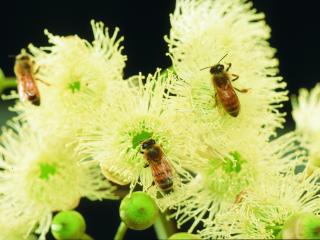Allergic reactions
A true allergic reaction develops within minutes after a sting, with blotches appearing all over the body. The eyes and nose may water and the scalp, palms of the hands, soles of the feet and crotch may itch. The lips and the tissue surrounding the eyes may swell and, as the blotches become more apparent, large areas of the body may become red and raised.
Recovery takes several hours but if breathing is affected seek medical help. A person with an allergic reaction who is stung again may develop a more serious reaction. Their blood pressure may drop drastically, causing unconsciousness, and the throat passages may swell, making breathing difficult. Seek immediate medical attention.
People with bee sting allergies should travel with a medical kit recommended by a doctor. The kit may contain anti-histamine tablets, adrenalin, a syringe and an isopreneline spray inhaler.
Fortunately, allergic reactions to bee stings are rare, with only about one person in 10,000 affected.
Preventing stings
Bees are attracted by moisture, particularly in hot weather, as they need water to cool the hive and maintain humidity. This increases the chance of being stung near leaking taps, swimming pools, or after a lawn has been watered.
Many people are stung on bare feet while moving lawn sprinklers, so wear suitable footwear.
Repair leaking taps and position bird baths away from pathways and play and work areas. Cover swimming pools and remove bees floating in the water before swimming. A saline chlorinator creates salty water that is less attractive to bees.
When flowers are scarce bees are attracted to traces of soft drink in bottles and the juice in damaged fruit on trees.
Plants with a strong scent, and those that produce large quantities of nectar, attract bees and should not be planted near walkways and play areas. A nursery can recommend alternatives.
When plants like the umbrella tree (Schefflera actinophylla) are in flower it causes bees to fall to the ground dazed, where they can sting people walking barefoot in the area.
Backyard beekeepers
One or two hives are considered a reasonable number to keep in a suburban backyard in the metropolitan area. Provide a water supply and position hives so the bees will fly high.
If a neighbour’s bees cause concern discuss problems with the beekeeper and refer queries to your local council. Alternately, the Western Australian Apiarist Society has information about bees and beekeeping and a list of swarm collectors on its website www.waas.org.au.
The Department of Agriculture and Food Western Australia (DAFWA) does not control where bees may be kept.


